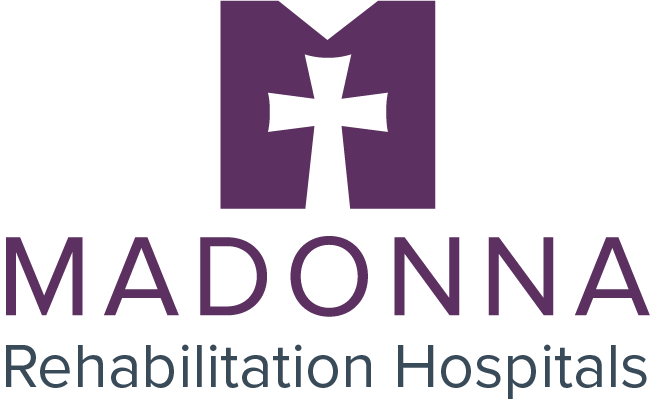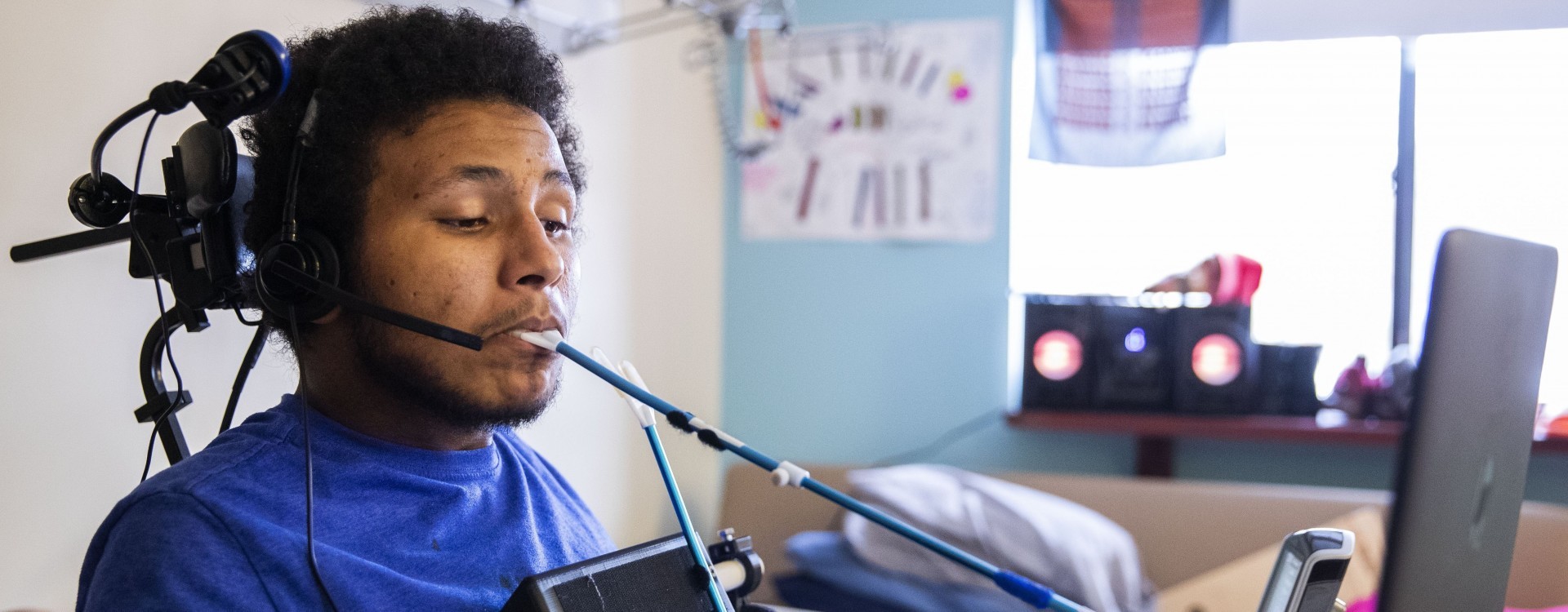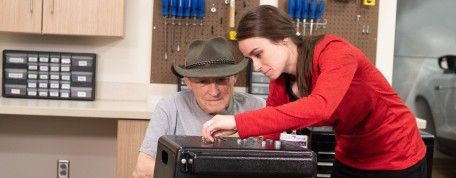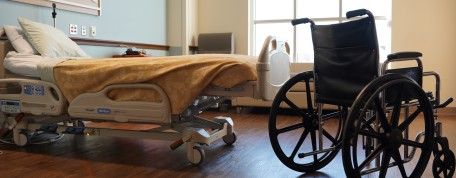Madonna’s on-site Research Institute for Rehabilitation Science and Engineering capitalizes on Madonna’s core values of Innovation and Collaboration to research and develop new technologies that improve access and outcomes for individuals with injury or illness. One of the ways the Institute does this is by creating custom devices for patients through the use of a Stratasys Fortus 3D printer.
Purchased in 2015 following a generous donation from the Goldwin Foundation, the Institute’s 3D printer allows engineers to create custom rehabilitation technology designs driven by a patient’s needs and do so more quickly compared to traditional design and build approaches. With this access, Madonna’s patients are able to gain independence more quickly through new and adaptive tools.
One of those new adaptive tools Madonna’s Institute, in conjunction with experts from the University of Nebraska-Lincoln and University of Nebraska at Omaha, designed using 3D printing technology is a modular robotic device that will help individuals with spinal cord injuries reach and retrieve items on surfaces above and below their wheelchair. After receiving input from patients on Madonna’s spinal cord injury unit, the collaborative team designed, 3D printed and evaluated a robotic arm prototype, known as the Modular Self-Reconfigurable Robot for Autonomous Rehabilitation Assistance (MARIO).
“After iterative design refinements by the team, key aspects of the power transmission hardware and end-gripper were 3D-printed in order to efficiently use space inside the robot and reduce overall cost,” said Dr. Judith Burnfield, Institute director.
Access to the 3D printer not only reduced the overall cost of developing the MARIO prototype, it also increased the speed at which it could be built. While this project yielded only a prototype, it set the framework for increased access of tools for individuals with spinal cord injury in the future.
Assistant research director for the Institute’s Rehabilitation Engineering Center of Excellence Arash Gonabadi said that, without direct access to a 3D printer, it would be difficult for patients with limited arm or hand function to access such a device.
Identifying patients’ needs takes a collaborative effort between the Institute and Madonna’s clinicians—the nurses and therapists that work daily with patients and see firsthand the barriers they face. Working with engineers like Arash Gonabadi, the Assistant Research Director for the Institute’s Rehabilitation Engineering Center of Excellence, clinical staff help the Institute identify and construct solutions for each individual patient.
“I really value collaborating with clinicians and patients and driving forward rehabilitation solutions,” Gonabadi said. “One recent collaboration integrated Madonna’s 3D printer to modify a mouthpiece design so that a younger child could generate just the right mouth pressure to control devices such as Xbox, PlayStation and Atari.”
Beyond advancing the rehabilitation experience for patients at Madonna, the Institute’s 3D printer is also utilized in the development of new technologies that advance the rehabilitation community as a whole. For example, Gonabadi recently worked with a student physical therapist, Alex Deghand, to create adaptive handles for the Madonna ICARE by SportsArt that can track a patient’s arm function while using the ICARE. With the use of the 3D printer, Gonabadi and Deghand were able to custom print key components for the adaptive handles that would encase specialized sensors to track movement.
The access to a 3D printer not only allows Madonna to better meet the needs of patients at all injury levels, it positions the Institute as a leader in rehabilitative research and engineering. It also allows the Institute to play a critical role in the rehabilitation of the complex and dynamic patient population Madonna serves.



